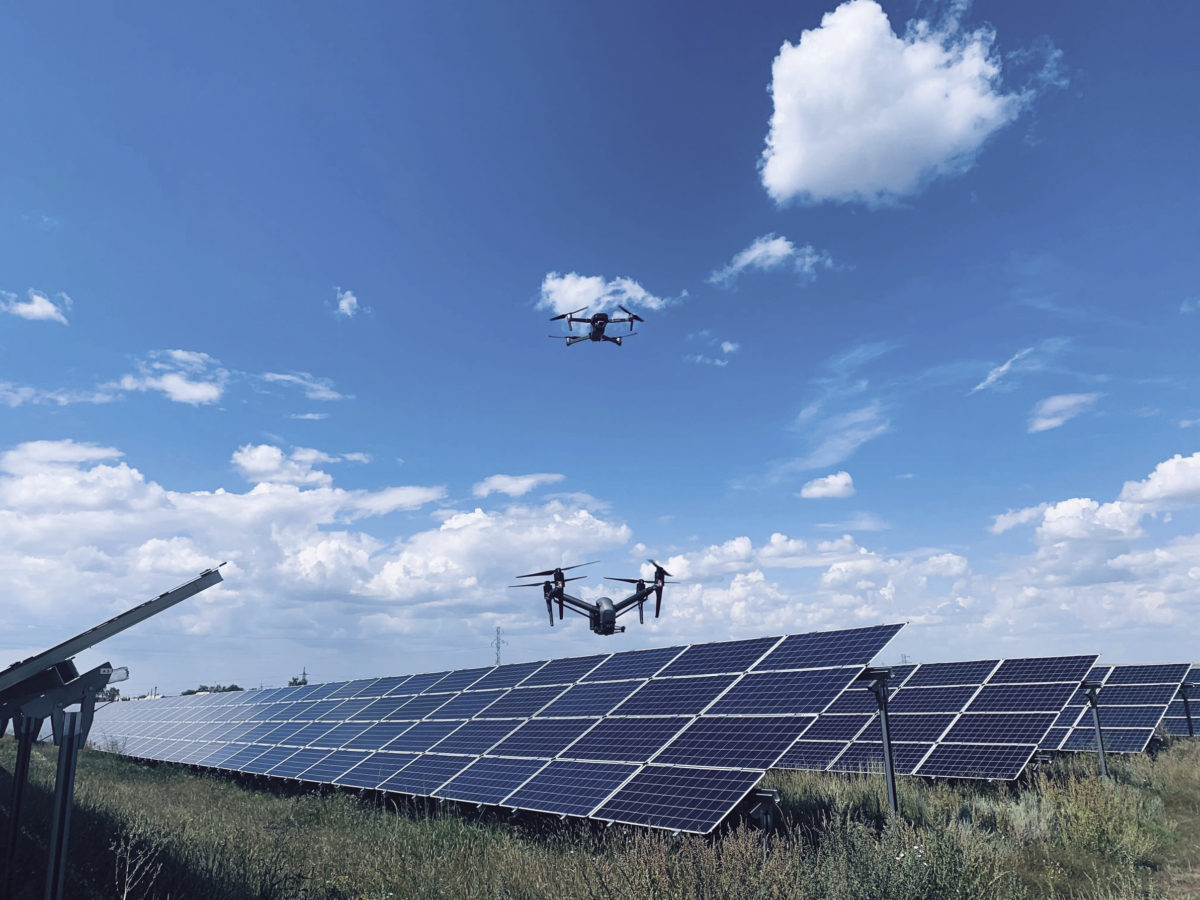For example, if you are running a computer vision algorithm to identify solar panel defects, you are engaging in AI, ML, and CV. In contrast, if you are translating words from English to Spanish using an algorithm, that is more likely to be AI or ML, not CV.
Most AI inspection projects in the solar panel industry are typically computer vision (CV) initiatives. This means that an algorithm uses images to identify solar panel defects.
What is AI-Powered inspection?
The use of AI and CV in solar panel inspection is relatively novel. Traditionally, solar farm operators would use a team of workers to manually inspect solar panels for defects. This process is slow, expensive, and not very accurate. Every solar farm operator knows that maintenance visits are extremely expensive, and are simply not feasible to perform daily for an entire solar deployment.
To speed up the inspection process and improve accuracy, solar farm operators are turning to AI-powered inspection. This involves the use of algorithms that can automatically detect solar panel defects from images.
This process is much faster and more accurate than manual inspection. Additionally, solar farm operators can use AI-powered inspection to identify defective panels before they are installed on the solar farm, and after they are already operational.
How does AI-powered inspection work?
There are a few different ways that solar farms can deploy AI-powered inspection. The most common way is through the use of an Unmanned Aerial Vehicle (UAV) or drone. UAVs provide a non-contact way for solar farm operators to perform quality control of their solar panels using aerial imagery.
Images collected by a UAV over a solar farm can be processed by an algorithm either in the cloud or on-device. The results of the AI algorithm will tell the quality controller which PV panels have visible signs of defective equipment.
By using automatic defect classification AI, quality controllers can reduce costs by surveying their entire facility in a few hours rather than hiring someone for days to conduct maintenance. Moreover, automatic identification of defective panels can speed up inspection time with location-based tagging, thus improving efficiency.
Which algorithms are used in solar panel inspection?
The most common algorithm type used in solar panel inspection is a deep learning algorithm. Deep learning algorithms are a type of machine learning algorithm that uses a neural network to learn how to solve a task. Neural networks are composed of interconnected layers that can learn how to recognize solar panel defects from images.
These deep learning networks require training data, which are large datasets of labeled images. In many cases, the solar farm operator can provide these labeled images to the deep learning algorithm. Alternatively, an AI vendor can provide these labeled images off the shelf.
For the in-house approach, this is done by creating a training dataset that consists of images containing solar panel defects, and also images without solar panel defects. The solar farm operator will label each image as either defective or non-defective so that the neural network learns how to identify both types of panels.
Once the deep learning algorithm has been trained, it can be used to inspect solar panels in images collected from a solar farm. The neural network will identify any solar panel defects in the image and provide a classification (defective or non-defective).
Challenges with AI-powered inspection
While AI-powered inspection offers several advantages for solar panel inspection, there are some challenges that need to be overcome.
The first is the availability of training data. In order for a deep learning algorithm to learn how to detect solar panel defects, it needs a large dataset of labeled images. This means that the solar farm operator needs to provide a set of solar panel images that contain solar panel defects and a set of solar panel images without defects.
The second challenge is the lack of standardization in solar panels. Solar farms can install hundreds or even thousands of different types and models of solar panels – each with its own unique characteristics such as size, shape, color, etc. Since solar panel characteristics can vary between solar farms, this could affect how well a single deep learning algorithm works across multiple solar facilities.
The final challenge is in the model accuracy of inspection results. Algorithms trained to detect solar panel defects will not be 100% accurate. This means that a small number of solar panels may be incorrectly classified as defective. However, by using multiple deep learning models (trained on different datasets), the chances of incorrect classification can be minimized.
Overall, AI is a very powerful tool for solar farm operators and should be incorporated into their maintenance routine. While there are some challenges, solar panel inspection using AI will increase efficiency and reduce costs.
About the author
Michael Naber is the Founder & CEO of Simerse, an AI inspection, and defect detection company.
The views and opinions expressed in this article are the author’s own, and do not necessarily reflect those held by pv magazine.
This content is protected by copyright and may not be reused. If you want to cooperate with us and would like to reuse some of our content, please contact: editors@pv-magazine.com.



The article discusses using AI for solar panel defect identification. ChatGPT further efficiency gains, we must ensure equitable advancement centering human needs and environmental justice. As renewable technology progresses, inclusive development policies prioritizing accessibility, affordability and social benefit remain vital. Though promising continued progress, ethically guiding innovation stays our moral duty.